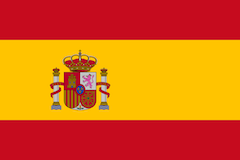Among the many aspects of the multifaceted experience of festivals and dances in the Andes, these public performances are powerful ways to immerse participants in a history told from within. They offer occasions when musicians, dancers, and other performers make visible, audible, and palpable stories about the local and regional past and present while also envisioning a future. During these festivals, the participants shape, learn, and remember many concept-feelings that are central to their individual, local, regional, national and even transnational identities. This is a particularly powerful form of social action for Andeans because of a predominant form of knowledge and memory that has existed in the region for thousands of years. At the core of this form of knowledge and memory is the unity of hearing, sight, and felt bodily movement (kinesthesia).
In the Quechua-speaking community of Pomacanchi, Acomayo, Cuzco, once a year, during a festival in honor of Saint Peter and Saint Paul on June 29, an archetypical ancestor comes to life, the Qanchi Machu. Many pomacanchinos (people from Pomacanchi) I worked with while researching their participation in the greatest pilgrimage of the Andean region were excited and proud to tell me stories about the powerful, rebellious, and mischievous Qanchi Machu, whom they call their grandfather. In those stories, as he traveled through many historical periods, he always outsmarted his opponents. While this character only appears in the flesh during the festival in honor of Saint Peter and Saint Paul, his persona is re-created through elements present in the dances considered traditional to the community: K’achampa and Qanchi. These dances are performed throughout the year in different festivals; K’achampa was the one that the comparsa members chose to embody the three times we traveled together to the sanctuary of the Lord of the Shiny Snow (Señor de Qoyllor Rit’i) at almost 16,000 feet above sea level. This group had taken the Qanchi dance to the sanctuary in the past, and dancers insisted that in both dances they embodied their pre-Hispanic archetypal ancestor, the Qanchi Machu.
In the town of San Jerónimo in Cuzco, as in many towns of the region, the masked and costumed dances performed during their patron-saint festival for Saint Jerome define and redefine ethnic/racial categories such as mestizo and Indigenous. The comparsas, through their institutional life during the year and their performances during the festival, define and redefine a series of categories such as “decency,” “autochthony,” “genuineness,” and “modernity” which rework and defy the mestizo/Indian dichotomy perpetuated by regional and national institutions that promote “folklore.” The dances performed in the town of Paucartambo in honor of their patron saint, the Virgin of Carmen, some of which were photographed by Pierre Verger, shape similar categories and have had a strong influence on what has since the 1970s been considered “traditional” in Cuzco.






